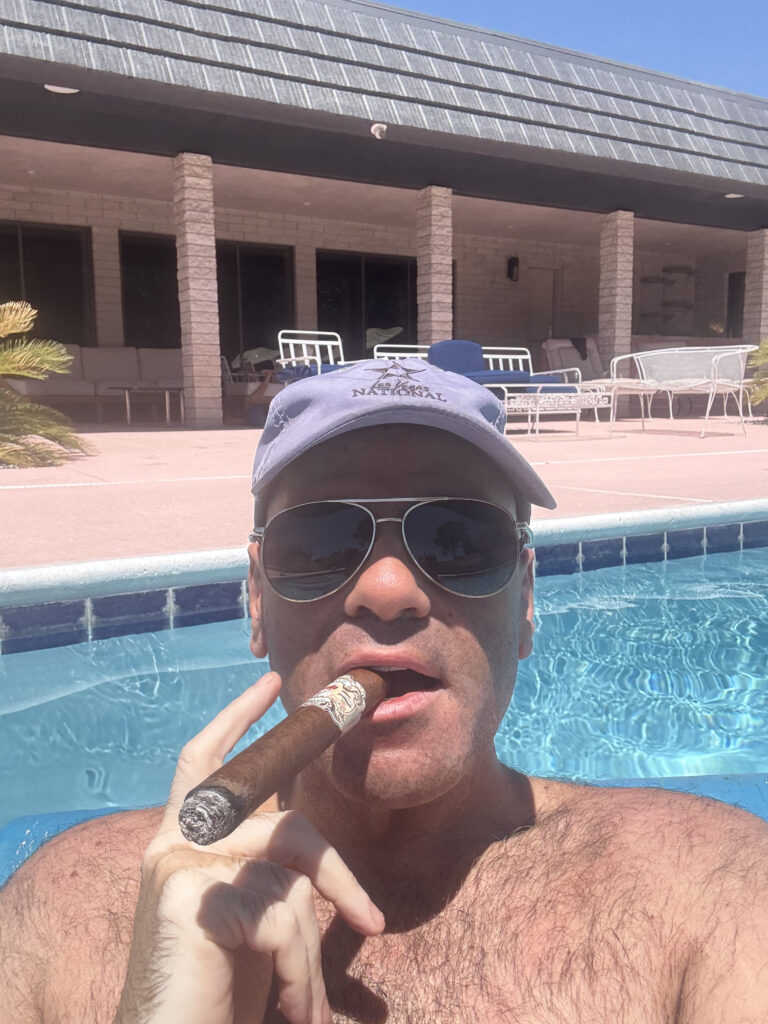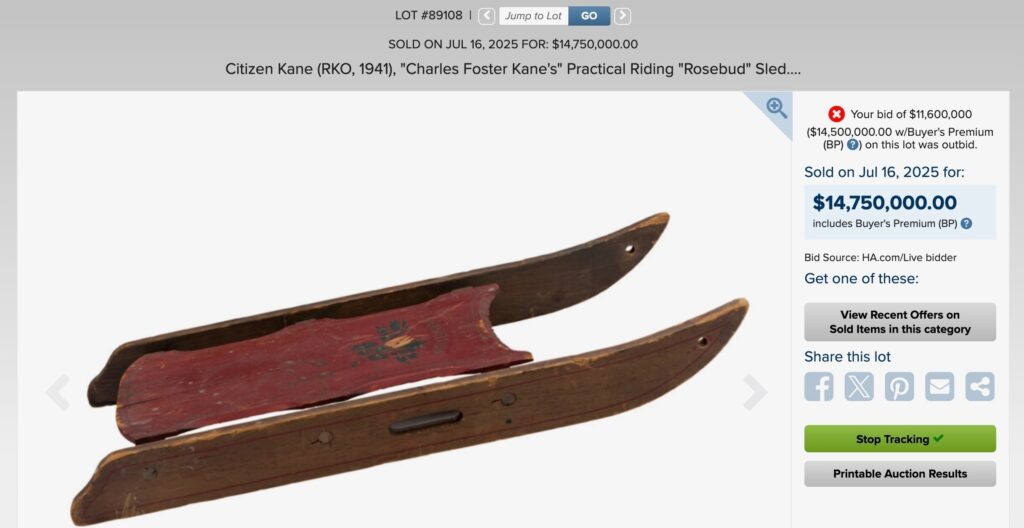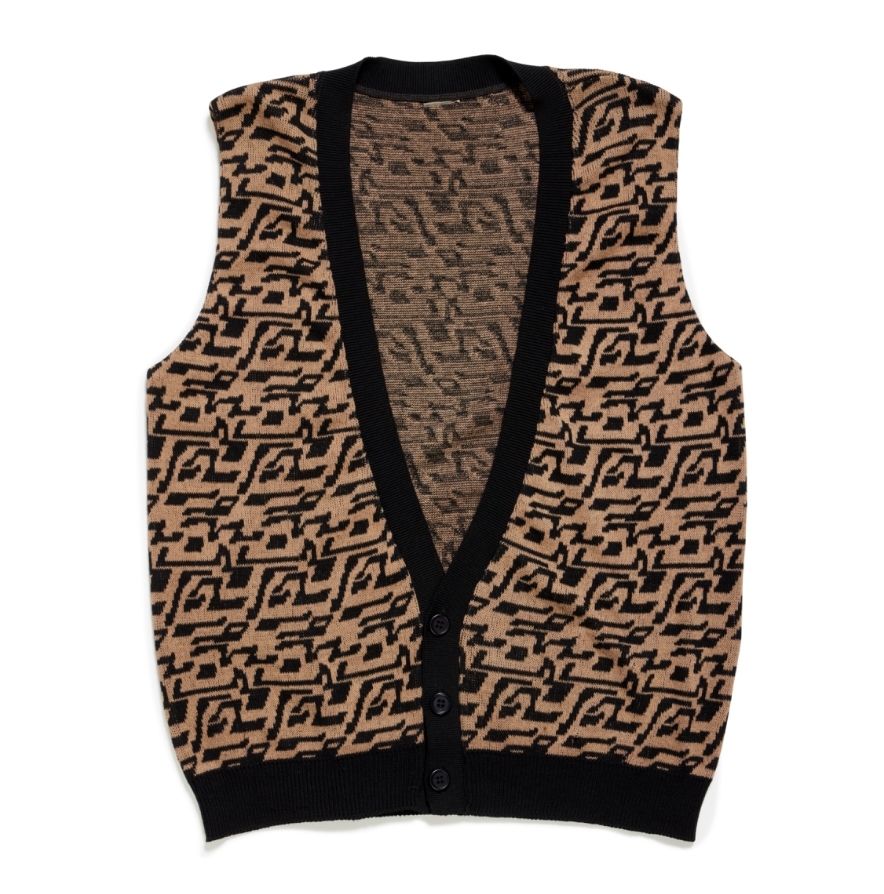
This is Street Smarts, a column from art advisor Ralph DeLuca that offers art world veterans and newcomers alike a straight-talking, no-bullshit guide to the aloof and difficult-to-crack contemporary art market.
In a summer filled with political turmoil, tariffs, art market jitters, and general stagnancy, collectors with deep pockets are increasingly looking beyond blue-chip contemporary art. Instead, they’re parking their money in pop culture icons, historic artifacts, and natural history—safer bets in uncertain times.
Those of you who know me—or follow me on social media—are aware that I don’t spend my summers in the Hamptons or Aspen like my clients, or globetrotting all over Europe like an A-list celebrity. I mostly spend the summers in my vintage house in Las Vegas enjoying the dry heat, the intense sun, my pool, good wine, cigars, and hosting friends and family for nice meals. This year, I’ve even managed to recruit my friend and mentor Todd Levin to buy a house a mile from my front door, and Heather Harmon, the esteemed director of the Las Vegas Museum of Art and a Las Vegas native, has also moved just down the street.
I take summer in Vegas as a welcome break from the New York art world—a time to step back and reflect on the last few months. Part of me can’t help but wonder if the recent issues we are seeing with the bankruptcies, closures, lawsuits, and market implosions are partly driven by people in the trade feeling pressure to live like their clients and other ultra-wealthy players in the art world. Coming from a lower middle-class background, I never lived that way and strive to live below my means as much as I can while still enjoying life. Frankly, clients don’t want their vendors—yes, that’s what we are—living like they do, especially as people who are working on commission.
The May auction season told a clear story: passes and buy-ins (that received more media coverage from the art press than the last election), failed guarantees, and lower prices. Now, this summer, it feels like one gallery closing after another. Clearly, we already know where the money isn’t going—so let’s talk about where it is being spent and offer some theories on why this shift might be happening.
The ultra-wealthy aren’t sweating inflation or rising grocery and fuel costs as much as most of us are. There is still apparently a lot of money floating around—so where is it going? Over the past decade, the market leaned heavily into identity politics—art as a message, art as a virtue signal. Today, I’m sensing a pullback. Collectors may no longer resonate with a particular artist’s message (if they ever even did?) and no longer want to live with—or even own—the work. So, it begs the question: Were many of the rising prices in the art market over the last decade fueled—at least in part—more by guilt, greed, and virtue signaling than by passion and connoisseurship? In today’s less overtly “woke” political climate, are collectors simply feeling less desire to support certain voices or align with the cultural moment?
I’m not saying this is a good thing, just an observation I’ve made. For most of my clients, this year has been about going back in history and looking at the classics or buying contemporary and emerging work that’s more about beautiful painting and technical skill than making a statement. More and more, collectors are looking at things that are not normally part of the art market conversation—like standout graphic design, pop culture, science, and natural history, even fossils.
At the same time, the way art is being consumed has changed. I think the insatiable appetite for images and swipe culture that changed the dating game has trickled into the art world. We don’t see art in person as often; many collectors are making decisions off Instagram posts instead of standing in front of the work. Are we now Facetuning art the same way we retouch our acne scars and winter weight gain—optimizing for likes rather than physical encounters?

Why Popular Culture, Nostalgia, and History Are Having a Moment
The art world has increasingly become more about exclusivity, access, trips, parties, and social capital—less about enthusiasm and ideas. Meanwhile, the once-lowbrow world of collecting memorabilia and natural history has muscled its way into evening sales, with top objects now fetching eight-figure prices. The elitism and barriers to entry to collect these items are much lower than for contemporary art, and the emotional pull is often stronger. You see people buying the things they grew up loving or feel personally passionate about. It’s a hobby-driven market that’s only recently been treated as an asset class.
Look at some of the big sales this summer: a nearly complete dinosaur skeleton selling for $30.5 million against its high estimate of $6 million, the original Hermès Birkin fetching $10 million, and the last known sled from Citizen Kane selling for nearly $15 million. Bidding for the latter opened at $250,000, and I had the (dis)pleasure of being the underbidder, battling it out with the winner on behalf of a client from $5 million on. These results show that collectors are putting serious money into objects that strike a personal chord, not just ticking an art world box.

Maybe that’s the lesson this summer: When the heat is on, collectors turn to what they love—not just what they’re told to love. I’ve been that kind of collector my entire life—movie and music posters, comic books, records—long before any of it was considered investment-grade. That’s part of why I took on a new role earlier this year as Vice Chairman and Global Head of Pop Culture at Sotheby’s: to put more focus on these categories where passion comes first and the market follows. Ferris Bueller’s sweater vest is a perfect example. I helped bring it to Sotheby’s, and it sold—for $279,400—because someone loved it, plain and simple.
Before you ask—yes, I’m still an art advisor and yes, I’m still writing this column for CULTURED. I just made my lifelong passion of collecting (and advising on) icons of popular culture another full time job (even more reason why I need my Sin City summer slowdown). These are simply the rambling summer thoughts, observations, and questions of an uneducated, third-generation child of Italian immigrants with instincts—typed out from a raft in a pool under the 110-degree Vegas sun.
DeLuca’s Definitions: An Art-World Glossary
Buy-in / Pass
A term for when a lot fails to meet its reserve price (the lowest price the seller is willing to accept) and remains unsold at auction.
Facetuning
The act of digitally altering a photo (usually with the Facetune app or similar tools) to smooth skin, whiten teeth, slim features—typically to look better online.
Guarantee / Failed Guarantee
An agreement in which a third party or the auction house promises the seller a minimum price for a work no matter what. A “failed guarantee” means the sale didn’t meet expectations.
Underbidder
The person who places the second-highest bid at auction.
Virtue Signaling
The act of showing your morals or support for a cause, sometimes more for social approval than real conviction.










 in your life?
in your life?

